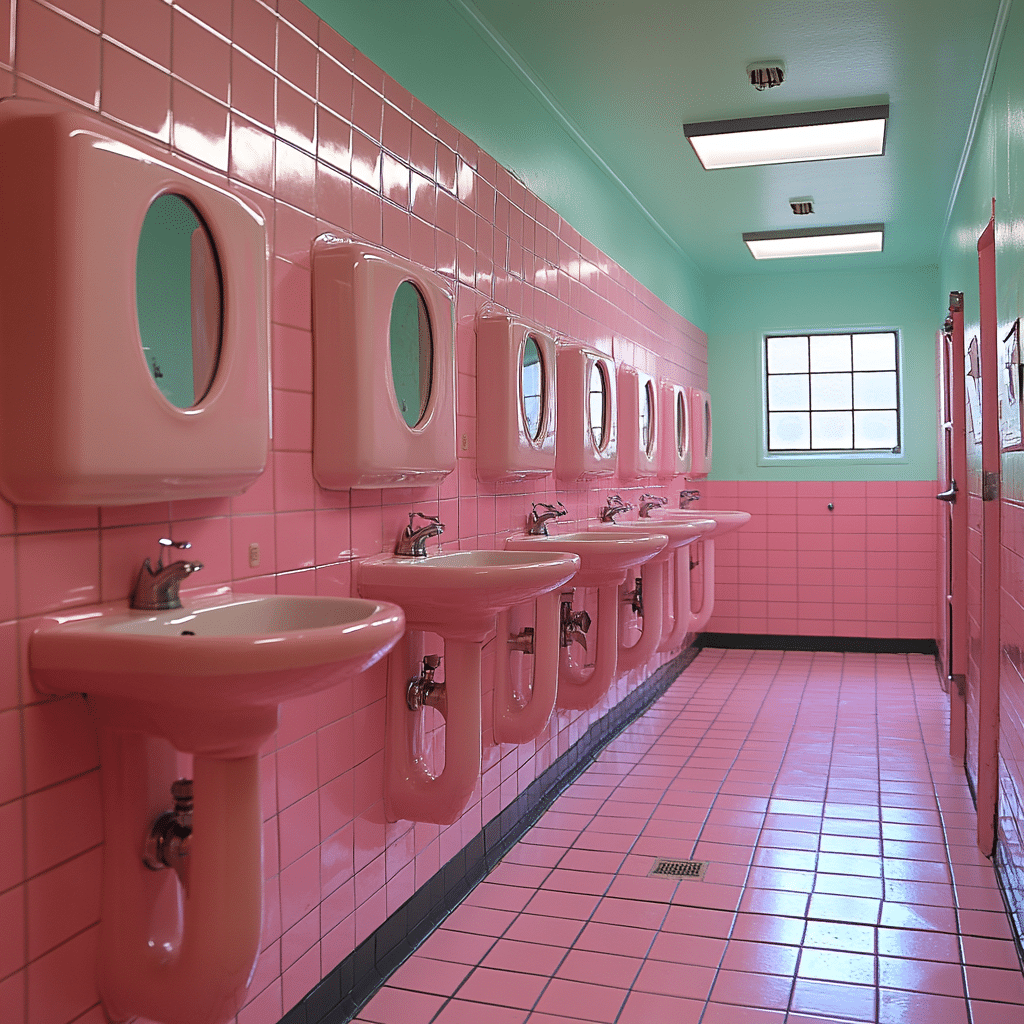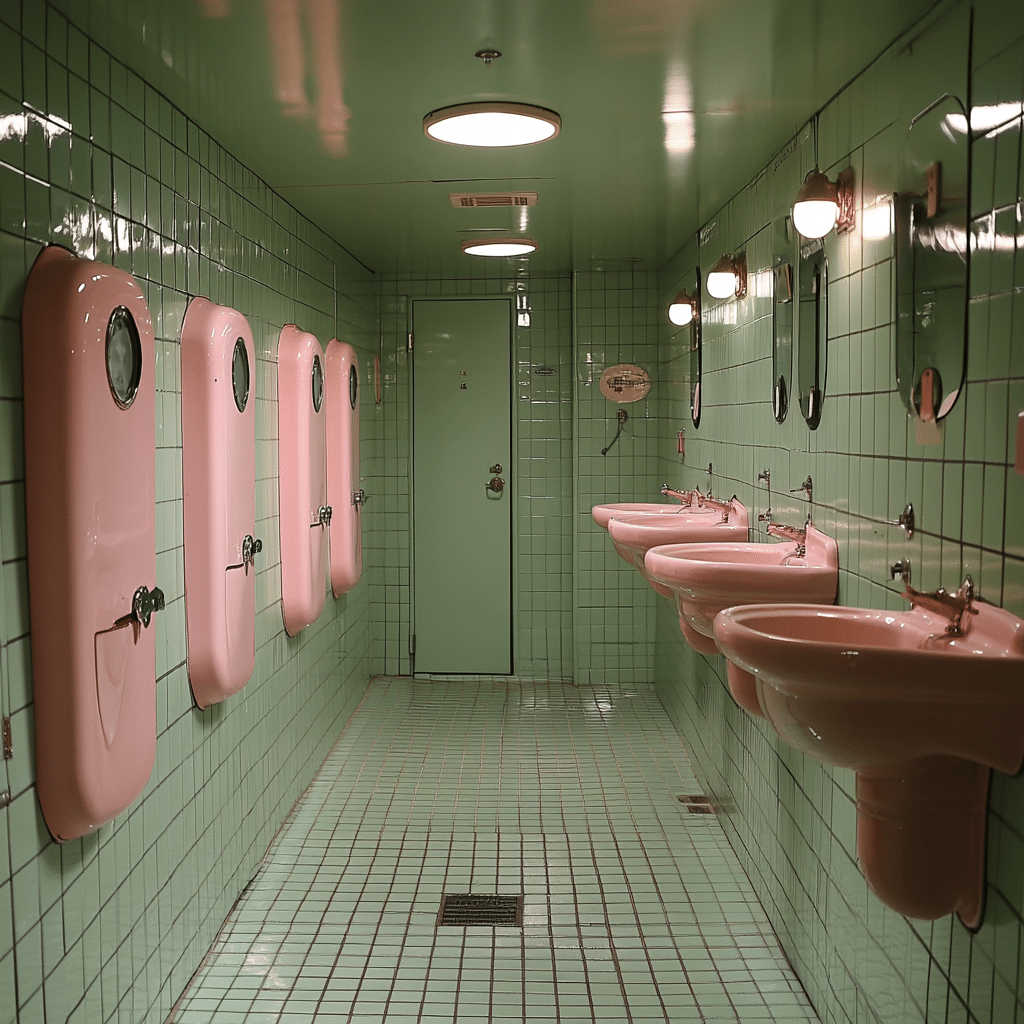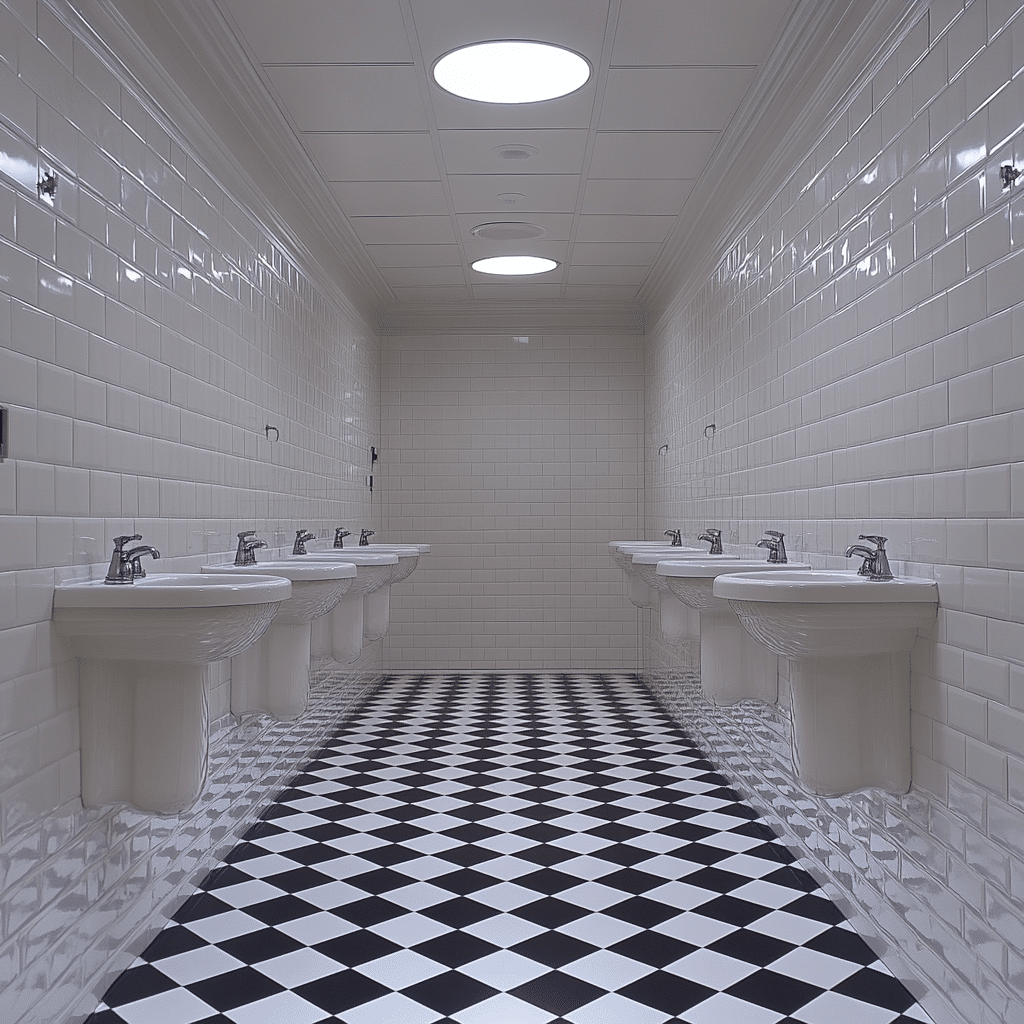### Breakthroughs in Women Urinal Design for Modern Hygiene
Historical Context: The Journey Towards Female Urinals
The concept of female urinals is not entirely new. However, the journey from initial designs to the sophisticated solutions we see today exemplifies a continuous effort to meet ergonomic, hygienic, and societal needs. Historical designs such as the “Lady’s Portable Urinal” of the late 19th century showcase early attempts at providing women with more sanitary and convenient options. Antiquated designs were often cumbersome and private, lacking the portability and hygiene standards necessary for widespread acceptance. These early prototypes laid the groundwork for today’s innovations, shaped by a growing understanding of female anatomy and public health requirements.
| Type | Description | Usability | Features | Price Range (if applicable) | Benefits |
| Jug Shaped | A deep, open receptacle easy to urinate in while standing or sitting | Standing/Sitting | Large opening, deep containment | $10 – $20 | Easy to use in various postures |
| Bottle Shaped | Narrow, hollow chamber with an opening designed to fit the female anatomy | Standing/Sitting | Designed for portability, narrow opening fitted to anatomy | $8 – $15 | Portable, discreet |
| Female Urination Device (FUD)/ Stand-to-Pee (STP) Device | Aids in precise aiming while urinating standing upright | Standing | Variations from disposable funnels to reusable designs; materials include plastic, silicone | $5 – $30 | Enables urination while standing, precise aiming |
| Tinkle Bell | Combines flexible and rigid materials for easy portability | Standing | Flexible spout, squeegee ridge for wiping, foldable for storage | $15 – $25 | Portable, easy to clean, multifaceted |
| Portable Urinals | Hygienic, reusable design for easy toileting | Standing/Sitting | Simple cleaning process, reusable many times | $10 – $20 | Environmentally friendly, cost-effective |
| Postural Adjustments | Some women opt to stand with back towards urinal, adopting a half-squatting position | Standing (Back-Towards) | Known as “skier’s posture” or “hovering stance” | Not applicable | Provides an alternative posture |
| Anatomical Considerations | Understanding the female anatomy for optimal product design | Foundational Knowledge | Urethra, vestibule, labia minora, epithelium; critical for designing appropriate urination devices | Not applicable | Ensures comfort and efficacy |
Innovative Designs Transforming Women’s Hygiene
1. Tinkle Belle: Collapsible Convenience
The Tinkle Belle stands out as a revolutionary, portable female urinal design. Specifically tailored for outdoor enthusiasts, its collapsible nature makes it both compact and convenient for travel. Unlike many earlier iterations that resembled traditional funnels, Tinkle Belle’s design includes an anatomical shape that fits snugly against the body, minimizing spillage and discomfort. Its soft squeegee ridge at the back further improves usability, providing a more hygienic solution compared to using a cloth or toilet paper.
2. PeeBuddy: Disposable Hygiene on the Go
PeeBuddy provides single-use urinal devices made from water-resistant cardboard, offering a hygienic solution perfect for festivals, road trips, and countries where public restroom hygiene is a concern. PeeBuddy’s focus on disposability ensures minimal cleanup, making it a user-friendly choice for women worldwide. This device proves especially handy in regions lacking adequate sanitation facilities, offering women a clean and portable urination option.
3. Shewee: A Longstanding Favourite
Shewee has long been a staple in the market for female urinals. Its hard plastic design is durable and reusable, providing a sustainable option for regular users. Shewee’s effectiveness is pronounced in military and emergency services, where it serves as a reliable solution for women in the field. The product’s jug-shaped design is easily used in both standing and semi-squatting positions, making it versatile and highly practical.

Real-World Applications: Female Urinals Changing Lives
Enhancing Accessibility in Public Spaces
Urban planners and architects are increasingly integrating female urinals in public restrooms. For example, the installation of the “Lapee” urinal design in Parisian parks provides an outdoor restroom option specifically for women. These installations reduce wait times and improve sanitation standards, particularly in high-traffic areas. By addressing the long-standing issue of inadequate female facilities, cities can create a more inclusive public infrastructure. This change enhances accessibility, making public spaces more welcoming and practical for women from all walks of life.
Sporting Events and Festivals: Meeting Demands
Events like the Glastonbury Festival and the London Marathon have adopted female urinals to accommodate thousands of attendees. The quick setup and ease of use of portable units like GoGirl help in managing large crowds effectively, reducing the environmental impact of traditional chemical toilets which have a larger carbon footprint. These solutions not only meet the acute needs during events but also promote long-term sustainable practices by encouraging less waste generation.
The Role of Sustainable Practices in Design
Reducing Environmental Impact
Brands such as Freshette focus on environmentally friendly materials and processes. Freshette devices often use recyclable materials and incorporate biodegradable disposal options. This innovative focus on sustainability reflects a growing trend in product design across the broader hygiene and sanitation industry. The trend towards greener solutions addresses modern environmental concerns, ensuring that female urinals are both effective and eco-conscious.
Promoting Reusability
Several companies are spearheading initiatives to promote the reusability of female urinals. For example, Pibella’s designs emphasize not only hygiene and comfort but also longevity. By providing easily cleanable designs, Pibella encourages a shift from single-use to multi-use, lowering waste generation and environmental strain. This push towards durable products aligns with broader goals of reducing single-use plastics and fostering sustainable habits.

Acceptance and Education: Breaking Taboos
Despite innovations and growing availability, societal acceptance of female urinals remains a barrier. Overcoming these obstacles requires educational campaigns and increased visibility. Organizations like “Women’s Pee Liberation” are championing awareness programs to normalize the use of female urinals, advocating for them as a necessity rather than a novelty. Such efforts are crucial in changing public perceptions and fostering an environment where women can comfortably discuss and use these devices.
The Future of Women Urinal Innovations
As technological advances continue to merge with user-centric designs, the future of female urinal solutions looks promising. Anticipated developments focus on further enhancing portability, comfort, and sanitation. Brands are exploring materials with self-cleaning properties and developing smart urinal systems capable of monitoring health indicators, transforming these devices into multifunctional health aids. This forward-thinking approach hints at a future where female urinals are an integral part of women’s daily lives, offering convenience and health benefits.
Embracing Change for a Better Tomorrow
The evolution of female urinals from basic designs to modern-day innovations exemplifies ingenuity and adaptability in response to societal needs. As public awareness and acceptance grow, these devices hold the potential to revolutionize hygiene practices, public infrastructure, and environmental sustainability. The continued integration and improvement of women urinal solutions bring us closer to a more inclusive and practical world, where women enjoy equal access to sanitary facilities.
This article provides a comprehensive look at the innovation within the industry. By understanding the deposit meaning and benefits of these devices, and considering incorporating them into events or public infrastructure, we can all work towards a more equitable society. Noteworthy mentions include notable public figures and their contributions to various fields. For instance, ex-Saints’ player Chris Kluwe advocates for greater inclusivity in sports and beyond. With these combined efforts, we can see a significant societal shift towards better hygiene and accessibility for all.
Women Urinal Innovations: Easy, Hygienic Solutions
Fascinating Facts and Trivia
Let’s dive into some interesting tidbits about women urinals. Did you know that the first patent for a women urinal was filed in the early 20th century? It’s wild to think that even then, people were seeking practical solutions for the problem of long ladies’ restroom lines. Fast forward to today, innovations like portable women urinals have cropped up, making it easier than ever for women on the go. Not to mention, they’re hygienic and practical for outdoor activities like hiking along US 40.
Another fascinating bit is how public events and festivals are now providing women urinals to speed things up and improve hygiene. These events, often sponsored by big brands, mimic the marketing strategies seen with everyday products like Morrisons vodka. It’s funny to think you might enjoy a sip from a well-known brand while comfortably knowing a restroom solution is nearby!
On the topic of public convenience, entrepreneurial insights say that investing in practical, high-demand services is as sound as snapping up prime Llc rental property deals. Women urinals stand as a testament to this wisdom, symbolizing smart investments that cater to broad, practical needs. They’re even being highlighted in Business keynote Speakers talks as game-changers in public health and convenience.
It’s also worth noting how women urinals are now appearing in literature, showing up in guides and handbooks found in places like Sainsburys Books. This shift in visibility underscores their increasing acceptance and importance. Just like rising stars, akin to Frankie Muniz net worth, the prominence of women urinals is shooting up as society recognizes their utility and convenience.
This remarkable journey through the history and impact of women urinals showcases not merely their practical benefits but also their social and economic influence.

How does a female urinal work?
Most female urinals are designed in two styles—jug-shaped and bottle-shaped. The jug-shaped ones are deep and open, and you can use them while standing or sitting. The bottle-shaped ones have a narrow, hollow chamber that fits the female anatomy. You use these to aim your urine stream, which makes urination more convenient in various situations.
What is the urinal area of women?
The urinal area for women typically means the space where a female urinal is installed, like in a women’s public restroom. It’s designed to provide a comfortable and private spot for women to urinate. The female anatomy involves the urethra opening into the vestibule, located between the labia minora, just in front of the vaginal opening.
What is the technical name for the ladies urinal?
The technical name for a ladies’ urinal is a female urination device (FUD). These devices are also called personal urination device (PUD), female urination aid, or stand-to-pee device (STP). They help you aim your urine stream more precisely while standing upright.
How do you clean a female urinal?
Cleaning a female urinal is super easy. Just give it a little shake, and then rinse it with water or soapy water. It’s reusable, so you can clean and use it multiple times without any fuss.
How do you use a Female Urinal lying down?
If you need to use a female urinal while lying down, it’s similar to using it when sitting. Place the urinal snugly against your body to avoid spills and ensure good alignment with the opening. Go ahead and urinate, then carefully remove the urinal once you’re finished.
What is the golden rule of urinal?
The golden rule of urinal etiquette is simple: Respect others’ privacy and keep things tidy. Don’t dawdle, and if the urinal’s busy, leave some space where possible. Clean up after yourself to keep the place nice for the next person.
How to use lapee female urinal?
To use a Lapee female urinal, approach the unit, stand over the open area, and adopt a comfortable position like the “skier’s posture” or “hovering stance.” Proceed to urinate, making sure to hit the targeted area to avoid splashes.
Why do urinals have no privacy?
Urinals typically lack privacy due to their design focused on maximizing space and easy maintenance. They are meant for quick, utilitarian use, where users are expected to be in and out without lingering.
Why does my urethra hurt when I pee?
If your urethra hurts when you pee, it might be due to various reasons like a urinary tract infection (UTI), irritation, or inflammation. Seeing a healthcare provider can help pinpoint the cause and get appropriate treatment.
Do urinals have p-traps?
Yes, urinals have P-traps—plumbing fixtures that retain a small amount of liquid to prevent sewer gases from coming back up through the drain. It’s vital for maintaining hygiene and reducing odors.
How to pee in western commode for females?
When using a Western commode, females can sit comfortably on the toilet seat and urinate as usual. Some prefer to hover slightly above the seat to avoid contact, especially in public restrooms.
How to pee standing up female without device?
Peeing standing up without a device can be tricky, but it’s possible by adopting the “skiing” or “hovering” posture and leaning slightly forward. Spreading your feet shoulder-width apart can help with balance and aiming.
What not to do at a urinal?
At a urinal, don’t invade others’ space or engage in unnecessary conversation. Avoid making eye contact as it can be uncomfortable. Always flush after use and ensure the area is clean for the next person.
How to use a she we?
Using a Shewee is straightforward. Place the wider end snugly against your body, aiming the spout away from you. Proceed to urinate and tilt the spout downward for proper flow. Afterward, rinse and dry the device for future use.
What is a travel jane?
A Travel Jane is a portable female urination device designed for travel. It often features a funnel shape that’s easy to use on the go, helping you urinate standing up or in situations where a toilet is unavailable.
How does a female urinary catheter work?
A female urinary catheter is a thin tube inserted into the urethra to help drain urine from the bladder. It’s often used when someone can’t urinate naturally due to medical conditions. The catheter leads the urine into a bag for disposal.
How does a she wee work?
A Shewee works by letting you stand and urinate without removing clothing. Position the wider end of the device snugly against your body, and point the spout away from you. Urine flows down the spout cleanly, keeping you dry.
How do you use a disposable female urination device?
To use a disposable female urination device, hold it firmly against your body to form a seal and aim the spout away. Proceed to urinate, allowing it to direct the flow. Dispose of the device responsibly after use to maintain hygiene.
How to use lapee Female Urinal?
For using a Lapee female urinal, stand over it and adopt a half-squat or “hovering stance.” This helps with accuracy and minimizes splashing. Aim for the center of the urinal and proceed to urinate.



